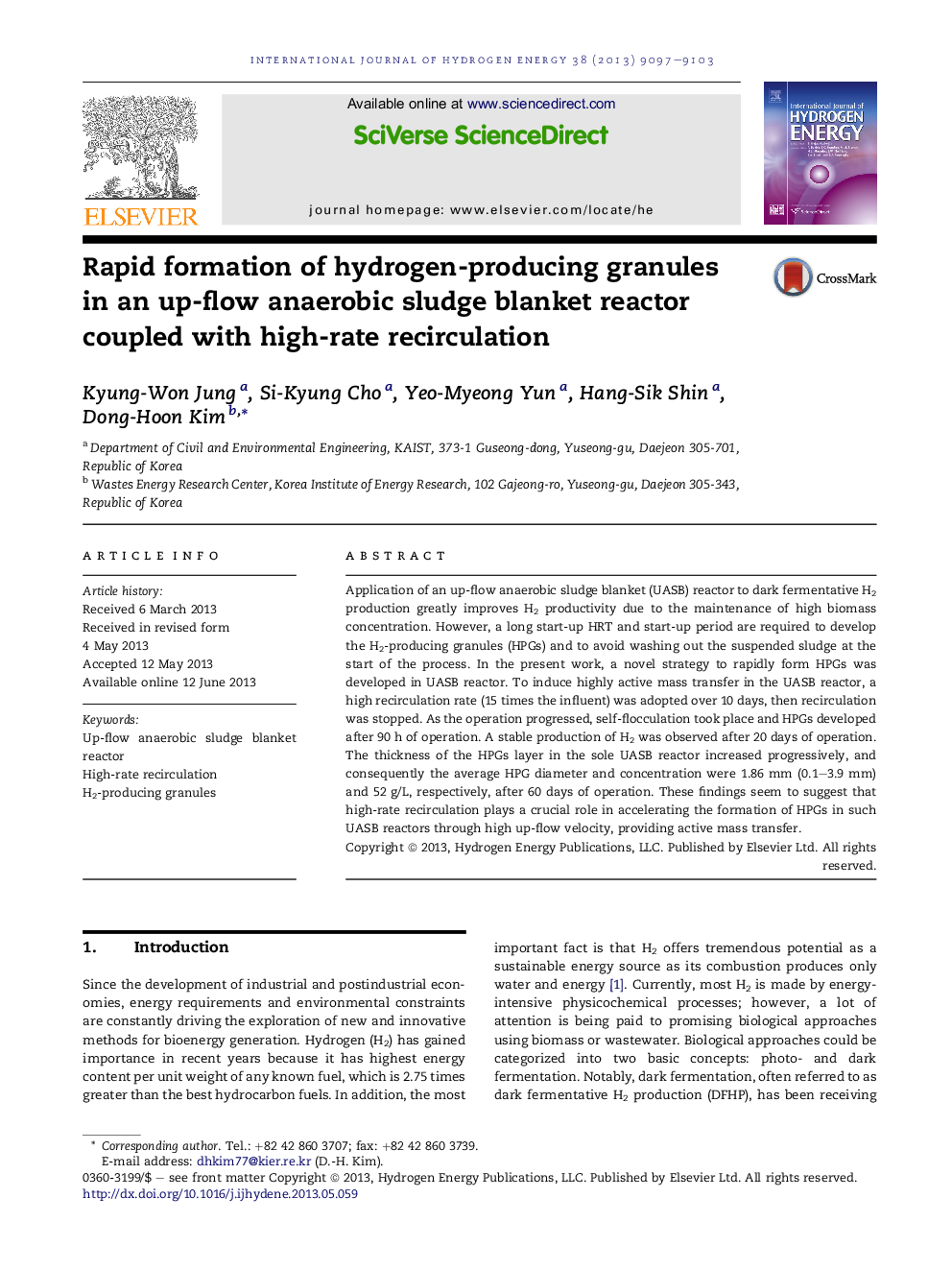| Article ID | Journal | Published Year | Pages | File Type |
|---|---|---|---|---|
| 7722288 | International Journal of Hydrogen Energy | 2013 | 7 Pages |
Abstract
Application of an up-flow anaerobic sludge blanket (UASB) reactor to dark fermentative H2 production greatly improves H2 productivity due to the maintenance of high biomass concentration. However, a long start-up HRT and start-up period are required to develop the H2-producing granules (HPGs) and to avoid washing out the suspended sludge at the start of the process. In the present work, a novel strategy to rapidly form HPGs was developed in UASB reactor. To induce highly active mass transfer in the UASB reactor, a high recirculation rate (15 times the influent) was adopted over 10 days, then recirculation was stopped. As the operation progressed, self-flocculation took place and HPGs developed after 90Â h of operation. A stable production of H2 was observed after 20 days of operation. The thickness of the HPGs layer in the sole UASB reactor increased progressively, and consequently the average HPG diameter and concentration were 1.86Â mm (0.1-3.9Â mm) and 52Â g/L, respectively, after 60 days of operation. These findings seem to suggest that high-rate recirculation plays a crucial role in accelerating the formation of HPGs in such UASB reactors through high up-flow velocity, providing active mass transfer.
Related Topics
Physical Sciences and Engineering
Chemistry
Electrochemistry
Authors
Kyung-Won Jung, Si-Kyung Cho, Yeo-Myeong Yun, Hang-Sik Shin, Dong-Hoon Kim,
